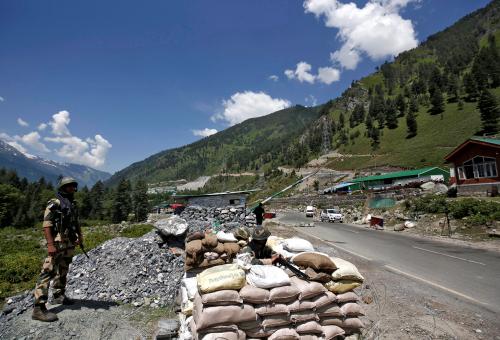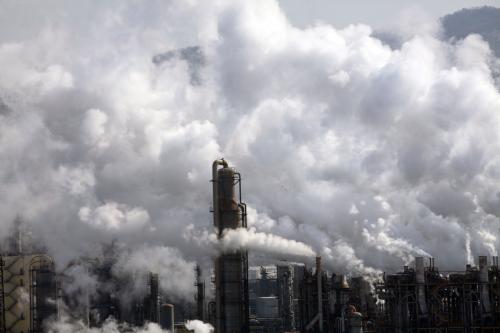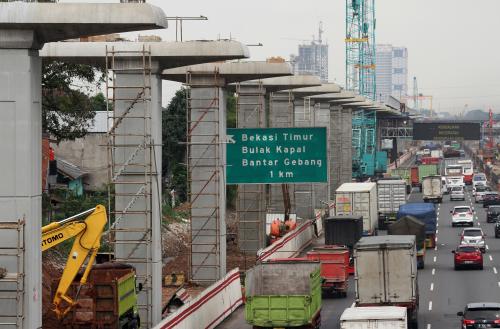Content from the Brookings Institution India Center is now archived. After seven years of an impactful partnership, as of September 11, 2020, Brookings India is now the Centre for Social and Economic Progress, an independent public policy institution based in India.
After decades of public-sector dominance, and controls that relegated the private sector to minority status in coal mining, India recently launched commercial coal mining via coal mine auctions. Proponents argue this will help bring in not just more capital and improved technology, but also improve the quality of production and output; critics worry this will lock in India to more coal. In fact, that concern doesn’t hold up, because changes in who mines won’t determine how much coal is consumed. It is demand for coal, especially for electricity, that determines coal’s future in India.
While coal use is winding down in much of the world, India still foresees some growth of coal-based power, even though renewable energy (RE) now represents virtually all the new capacity in recent years. India’s very ambitious renewable energy targets are relatively easy to manage in terms of cost-competitiveness and grid integration in the first phase, with 175 gigawatts of renewable energy planned by 2022, or about 20% of demand. But subsequent growth will require changes to the grid and to storage technologies, which are expensive today. Unlike the United States, which found cheap shale gas to displace coal, India only has coal available for so-called firm or baseload power in the short run, before storage technologies mature. Indian Prime Minister Narendra Modi’s recent announcement regarding a focus on post-COVID self-reliance included the reforms allowing commercial private-sector mining.
Energy security was always a driver for India’s domestic coal production, but shortfalls in production lead to imports of over 200 million tonnes (MT) of coal annually, second only to China. Coal India Limited (CIL), the public-sector enterprise that is the world’s largest coal miner (producing about 600 MT annually), is responsible for some 85% of domestic production, but its output has often missed production targets.
Commercial coal mining was not allowed until now, and there was only limited private-sector mining for so-termed captive mining, which was by end-users like power plants or steel factories. Now that commercial coal mining will be allowed, India will have a greater capacity to meet existing demand through domestic production.
Why improved coal mining won’t drive up demand
Cheaper domestic coal will not ultimately raise the competitiveness of coal-based power, even though it will mean fewer expensive imports. The final price of coal delivered to power plants has three components: the price the miner charges, government taxes (which includes royalty payments and levies), and transportation costs. Indian taxes are amongst the highest in the world, used to buttress state and central government budgets, and can be almost as high as the notified price for low-grade coal to power plants. This includes a 400 rupees per tonne “coal cess,” a pseudo-carbon tax amounting to between $3-4 per ton of carbon dioxide. Transportation is also very expensive, as Indian Railways — the dominant mode — overcharges coal transporters by at least 31% to subsidize passengers.
The new private-sector mining would only impact miner prices, and that too only by a small amount. Coal India Limited prices are regulated, averaged out across almost all mines by grade of coal (calorific value), regardless of the cost of mining, and kept low for power plants. Costs of mining vary by a factor of 5 or 6 depending on the location, but most new growth is from inexpensive mines where the coal is near the surface and mine sizes are large. These mines already operate efficiently, often through private-sector contractors, termed mine developers and operators (MDOs). This suggests that the expected efficiency gains by private-sector competitive mining would be a tiny fraction of total delivered costs of coal, which include transportation and taxes.
Importantly, any new mine will take years to develop, even if the developer is willing to take on the risks from the broader energy transition. The 2015 big-bang auctions for private-sector captive mines led to a frenzy of aggressive bids, and even irrational prices driven by extreme scarcity. But subsequent bids, albeit for captive mines, have fizzled (and in some cases have been cancelled due to lack of interest).
The question becomes: Who will bid on these new mines? Global appetite is especially unknown, more so if bids leave little value on the table, as happened in 2015, under a bidding process that focused on maximizing exchequer revenues. Those bids led to large volumes on paper, but little actual production of coal.
Marginally cheaper coal won’t spur more coal-based electricity, especially since power prices are expected to rise as plants must retrofit to meet stringent emissions norms. The key factor is the cost of electricity, and renewable energy is winning that battle right now. However, industry has fewer alternatives to coal in the short term, more so given limited availability of cheap natural gas.
Better coal isn’t in conflict with a broader energy transition
As part of India’s transition to low-carbon energy, private coal mining will be useful at two levels. First, competition for fuels enables meaningful competition for electricity, which can then spur greater clean energy sources. Second, having a third party mine coal could mean less “lock-in” compared to a situation where the mine is restricted to a particular power plant through captive mining norms, which involves a lot of sunk costs.
India needs to clean up its coal instead of wishing it away.
India needs to clean up its coal instead of wishing it away. Most improvements need to be in consumption, not production. Coal power plants have delayed cleaning up their emissions to the new norms by five years, more than double the original timeframe, and have asked for further waivers citing the COVID-19 pandemic. But there’s even less regulation of smaller users of coal, such as brick kilns, which are also located much closer to population centers.
Commercial coal mining should become a test case for higher environmental, labor, and social standards, especially if it brings greater scrutiny, transparency, and global best practices, including coal washing. The government recently scrapped 2014 mandates for washing coal for coal that is transported long distances. This wasn’t because washing wouldn’t help for India’s poor quality (i.e., high ash) coal, just that it was being done badly.
Thanks to renewable energy but also energy efficiency and structural shifts in the economy, the growth rate for Indian coal has already slowed down, and clean energy is only getting cheaper. It’s worth emphasizing that despite being the second largest consumer of coal in the world (though consuming less than a quarter of China’s coal in 2019), Indian per capita coal consumption is only 71% of the world average. When we factor in the low quality of coal — effectively, less carbon per tonne — India’s per capita coal carbon emissions are under two-thirds of the world’s average.
While much of the world is talking of phasing out coal, India’s short-term focus is on peaking coal as soon as possible. Coal accounts for just under half of India’s commercial primary energy and will take time to phase out. The flip side is that India doesn’t have as much oil and gas consumption. So when the United Kingdom — with coal down to 3.3% of primary energy use in 2019 — wants to “end coal” soon, it won’t reduce carbon emissions much. Even a green energy pioneer like Germany used over four times India’s coal, per capita, in 2019, even though coal is only 17.5% of Germany’s primary energy.
India’s decarbonization journey will look different than other countries. Instead of concern over recent coal mining reforms, the world can help India’s transition, offering cheap global finance and access to clean technology, including technology to clean up coal. India is showing reforms and leadership, not just in coal but also in renewable energy. The world doesn’t want India to go down the same carbon development path as China — but it would be unfair, and grossly unrealistic, to expect India to become so dramatically green to make up for over-emissions by the rest of the world.










Commentary
Why India’s push for private-sector coal mining won’t raise carbon emissions
July 20, 2020